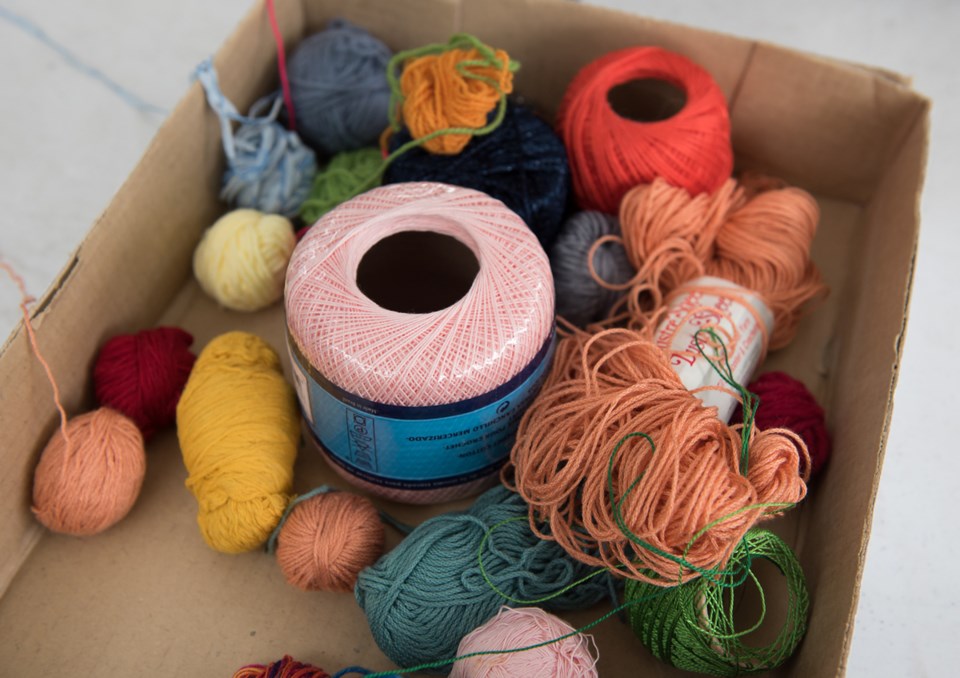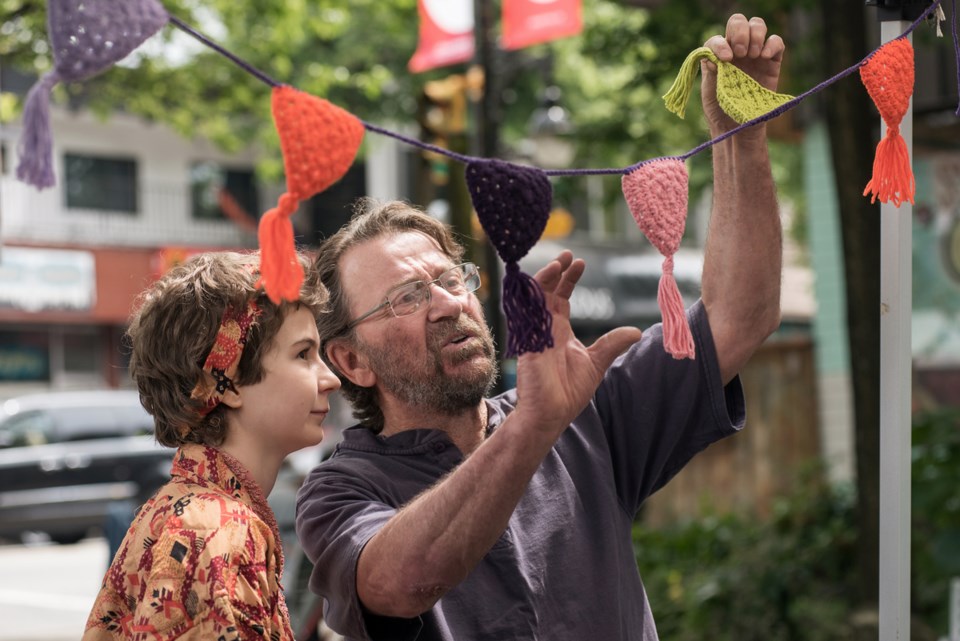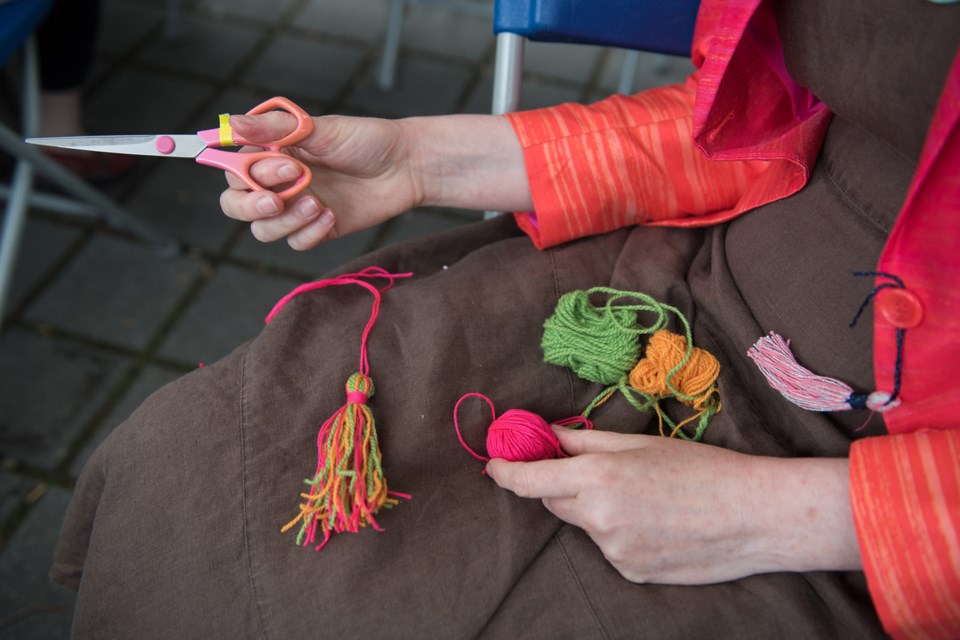Whether itâs high on a hill or strung on branches, artist Katherine Polgrain has left her hearts in her Commercial Drive neighbourhood.
The knitted hearts are just the right size to fit in the palm of a hand, and part of the small-scale, big-effect yarn bombing Polgrain does on her own every so often.
âWhat I like about yarn bombing in particular is that I can sneak around and somebodyâs going to find whatever it is Iâve left and itâs really going to make their day,â said Polgrain who attached a little paper label on each heart that reads, âYou are Loved.â Ìý
âItâs not about money and itâs not about creating a wonderful piece of art or anything like that,â she added. âItâs a random act of kindness. I heard indirectly from people who found them; they have this element of surprise. I love it.â

Ìý
Polgrain, an arts and culture coordinator for Britannia Community Centre, decided to spread the joy of the grandma graffiti movement by teaching others how to knit, felt and crochet along with friend and long-time Britannia arts contractor and instructor Helen Spaxman.
So, this past Saturday, as they have done for the last five years, the women set up a craft station in Britanniaâs greenway as part of International Yarn Bombing Day.
Polgrain and Spaxman showed passersby how to make a tassel â this yearâs choice of craft. It was purposefully a simple creation done by wrapping bits of yarn around a piece of square cardboard for a standard measurement, balling it and then tying the neck. Some walked away with their finished tassel in hand or attached to a button on a coat; others left it with Polgrain and Spaxman to be hung in the areaâs approved yarn bombing target â a cherry tree at the foot of Napier Street. The tree has been decorated with pom-poms and crocheted works in the past and attracts much attention before the creations are thrashed by the elements and taken down, say the women.

Ìý
âI pulled the felting down yesterday,â said Spaxman who opened a bag to show how well the soft ornaments had weathered. âI remember pulling the pom-poms down and I reveled in how they had formed an outer shell of algae. I wanted to put them in a jar and say, âWe just harvested these from the pom-pom tree!ââ
Urban knitting has appeared all over the world with artists knitting colourful scarves for statues, sweaters for telephone poles and installing fibre art on otherwise bleak-looking chainlink fences. The possibilities for canvases are as endless as walls are to graffiti artists. The movement had origins in Texas in 2005 with knitting crew Knitta Please spawning the idea of guerrilla knitting as cozy public art. By the book, itâs sometimes considered by most cities to be gently illegal (using the cherry tree for the yarn bombing is done with approval from Britannia Neighbours in Action as the local yarn bombers donât harm the tree and take the creations down once they start falling apart).
Knitting is historically associated with women (both Polgrain and Spaxman were taught by their mothers) out of a need for basic necessities such as clothing or blankets. Guerrilla knitting has been a mostly female-based movement and motivations range from taking back cold and unwelcoming spaces to those who feel the same way as Polgrain and simply want to brighten a strangerâs day. More males are knitting these days, it should be mentioned, and Spaxman sees first-hand evidence of this when she leads her noon-hour knitting classes at Britannia secondaryâs feeder schools. The program at Strathcona elementary is particularly well attended by both girls and boys, she says.
âI have an army of knitters at Strathcona,â Spaxman said. âI consider that to be my yarn bombing as well. I get them to make things or help me make things and they wear them. They walk around the school like theyâve been yarn bombed themselves.â
Yarn bombing is also about accessibility; itâs done by anyone, for anyone.
âYarn bombing is also taking something thatâs not really high valued as being art and making it something that people are really going to enjoy,â said Polgrain. âWhen somebody finds it, itâs like this little treasure somebody left for them. Thatâs what I really like about it.â
@rebeccablissett



